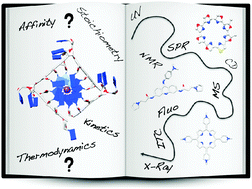Methods for investigating G-quadruplex DNA/ligand interactions
Abstract
DNA is considered an important target for

* Corresponding authors
a
Department of Chemistry, The University of Cambridge, Cambridge CB2 1EW, UK
E-mail:
pm473@cam.ac.uk
b
Department of Pharmaceutics, Ernest Mario School of Pharmacy, Rutgers, The State University of New Jersey, New Brunswick, NJ, USA
E-mail:
yashveer@rci.rutgers.edu
Fax: +1-7324454271
c
Département de Chimie Moléculaire UMR CNRS 5250, Université Joseph Fourier, BP 53-38041, Grenoble cedex 9, France
E-mail:
eric.defrancq@ujf-grenoble.fr
Fax: +33 (0)4 56 52 08 30
DNA is considered an important target for

 Please wait while we load your content...
Something went wrong. Try again?
Please wait while we load your content...
Something went wrong. Try again?
P. Murat, Y. Singh and E. Defrancq, Chem. Soc. Rev., 2011, 40, 5293 DOI: 10.1039/C1CS15117G
To request permission to reproduce material from this article, please go to the Copyright Clearance Center request page.
If you are an author contributing to an RSC publication, you do not need to request permission provided correct acknowledgement is given.
If you are the author of this article, you do not need to request permission to reproduce figures and diagrams provided correct acknowledgement is given. If you want to reproduce the whole article in a third-party publication (excluding your thesis/dissertation for which permission is not required) please go to the Copyright Clearance Center request page.
Read more about how to correctly acknowledge RSC content.
 Fetching data from CrossRef.
Fetching data from CrossRef.
This may take some time to load.
Loading related content
